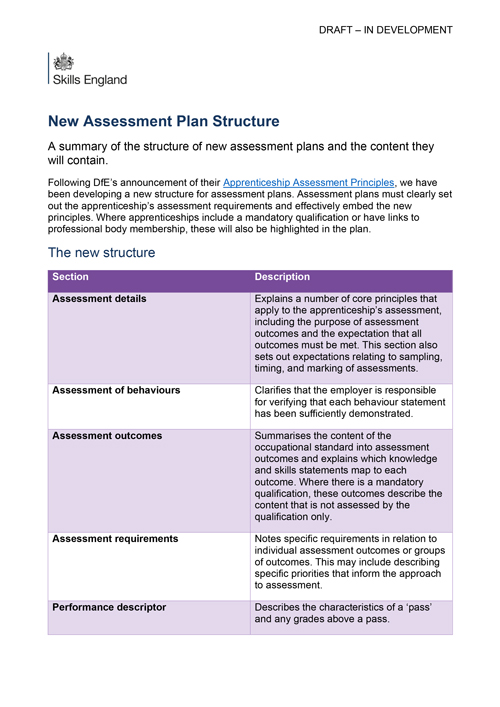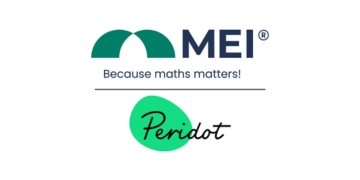The assessment watchdog has set out how it plans to regulate new-style apprenticeship assessments that will see training providers do their own marking and more control over assessment methods handed to awarding organisations.
Ofqual sets out the rules that awarding organisations (AOs) must follow and has the power to sanction them if these rules are broken. A 14,000-word consultation launched today sets out new proposed rules for “simplified” apprenticeship assessments, following the government’s revised assessment principles for apprenticeships announced earlier this year.
One of those new principles was allowing training providers to do some of the assessment of their apprentices themselves. Currently, all assessments must be done by awarding organisations (AOs) and must take place at the end of the apprenticeship programme. New assessments will be able to take place during, rather than at the end, of an apprenticeship.
The current system of end point assessments has come under criticism in recent years. Training providers have complained about high costs and bureaucracy. And crippling assessor shortages in some sectors have left apprentices waiting months longer than planned to complete their apprenticeship, leading to dropouts and low achievement rate scores for training providers.
It’s unclear when new-style apprenticeship assessments will be brought in. There will be another consultation after this one, and the awarding sector is braced for a raft of new guidance they will be required to follow.
FE Week has asked Ofqual, Skills England and DfE for clarity. We’ve been told delivery timescales will be published “in due course”.
Ofqual is proposing that existing apprentices continue to be assessed under the current rules, with new-style assessments taking place for new starts once the new rules have been consulted on and approved. More on that below.
Here is your trusty FE Week speed-read on Ofqual’s proposals.
RIP EPA
Regulating for assessments under the February principles is a “significant change”, Ofqual said, giving awarding organisations “greater design and delivery flexibility”.
The first change is that elements of an apprentices’ assessment will be able to take place “on-programme”, rather than waiting until the end.
What apprentices get assessed on will still be informed by the apprenticeship standard, and new slimmed-down assessment plans (more on those below). But behind the scenes, Ofqual will be expecting detailed strategies and plans from AOs on what gets assessed, when, by who, and how.
The consultation stated: “Ofqual does not propose to prescribe the overall structure of apprenticeship assessment or when individual assessments should take place. This is because decisions about the structure of assessment and when assessment should take place are best made at the level of the individual apprenticeship assessment, in line with the occupational standard.”
Rob Nitsch, chief executive of the Federation of Awarding Bodies, said: “The changes are substantial and will impact awarding organisations, providers and employers; it is important to remember that EPA is valued and the majority of assessments are working well now”.
Centre marking
Ofqual recommended AOs should be required to mark “a substantial proportion” of apprenticeship assessments but they should allow training providers and colleges to make some of the assessments themselves.
Ofqual said today they recognise this is a “significant” change and have proposed rules to mitigate against risks to the reliability of assessments. Those risks range from inconsistency between different assessors from the same training provider through to fraud and malpractice.
To reduce those risks, the regulator suggested 40 per cent of the assessment should be marked by AOs, but advised AOs could do less.
Ofqual’s plan is to publish guidance for AOs to follow, and be held to account to, rather than prescribing how much marking AOs or centres should do.
Some training providers may not want to mark their own apprentices’ assessments, according to the Association of Employment and Learning Providers (AELP).
Simon Ashworth, AELP’s deputy CEO, said: “It’s important not to assume that all employers or providers want to play a direct role in assessment. The system should support flexibility and choice, rather than impose a one-size-fits-all model”.
Following the consultation, which closes in August, there will be another consultation on “the detail” and a raft of new guidance AOs will be expected to follow.
‘Substantial’ synoptics
Apprentices can face a range of different types of assessment. The methods differ for each apprenticeship but are all currently carried out by independent assessors from approved end-point assessment organisations.
In the popular level 3 business administrator apprenticeship for example, apprentices currently go through a multiple-choice knowledge test, a 30-45 minute portfolio-based interview with an assessor, and a project presentation.
Apprentice installation and maintenance electricians currently undergo a 17-hour “observation of professional competence”, a 90-minute scenario-based interview and a multiple-choice online knowledge test.
Ofqual confirmed that AOs will still need to set the assessments and there will still be rules to make sure these are appropriately demanding.
But the rules will be less prescriptive. AOs will have to include a “synoptic” assessment in apprenticeships. This means giving apprentices tasks or tests that assess a wide range of knowledge and skills taught over the whole apprenticeships.
These can be marked “by the AO or by centres, depending on what is appropriate” for the apprenticeship.
These synoptic assessments should, Ofqual propose, make up a “substantial” proportion of the overall assessment. They suggest 40 per cent but there will be guidance for AOs to follow, rather than a requirement. But less than 40 per cent would need to be “justified”.
Nitsch added: “The Federation welcomes the new opportunities for awarding organisations to apply their expertise whilst sustaining critical aspects of apprenticeship assessment, such as independence and synoptic components. This will benefit apprentices and employers”.
Simple plans

Documents known as apprenticeship assessment plans tell AOs and training providers what apprentices need to be taught and how they should be assessed. Each approved apprenticeship must have an assessment plan.
The government wants “simpler” assessment plans, which can currently run to over 30 pages, and told Skills England to start reviewing each one.
Today’s consultation came with a new assessment plan structure for AOs from Skills England. It lists five sections for AOs to follow once they’ve been rolled out; assessment details, assessment of behaviours, assessment outcomes, assessment requirements and a performance descriptor (how apprentices achieve grades).
Writing for FE Week in February, skills minister Jacqui Smith promised “assessment plans will now be shorter and more flexible, focusing on the ‘must haves’ for occupational competency and also allowing providers to deliver assessments in some cases without compromising quality”.
Next steps
While Skills England reviews and simplifies the assessment plans, Ofqual is now carrying out the first of at least two consultations on assessment regulation.
Ofqual proposes that when new-style assessments are ready, they should be introduced for new apprentices, so existing apprentices will continue under the current end point assessment model.
They acknowledge that this could mean a period where training providers have apprentices on two different assessment models.
Published delivery timescales have been promised “in due course”.
Ofqual’s consultation says all new apprentices will start under the new assessment regime “in the fullness of time”.
Nitsch said: “Key to the successful implementation of these changes will be sensible timelines, collaboration and the continuing the engagement with the sector that we are now seeing”.
Apprentices, training providers and employers have until August 27, 2025 to respond to the consultation.
















So we’ll just go back to frameworks then shall we?